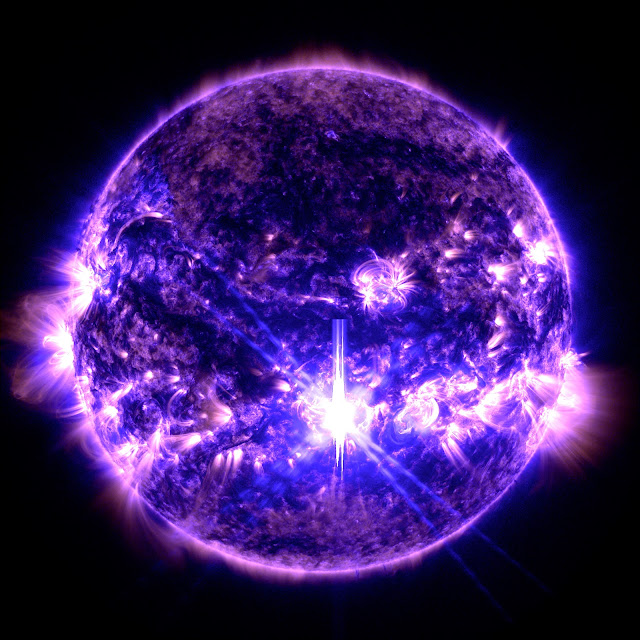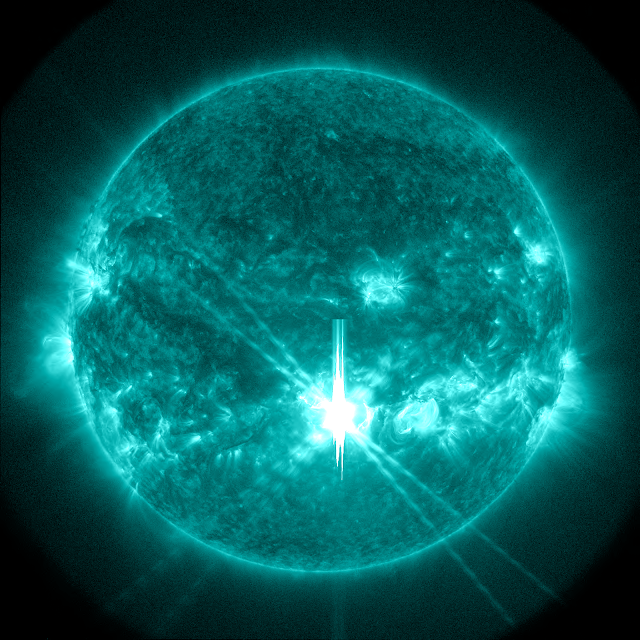Arrival of NASA's SpaceX Crew-9 Dragon Spacecraft | International Space Station

NASA Astronaut Don Pettit: "Here Be Dragons! The approach and docking sequence naturally draws our crew to a window; in this case, about five of us were crowded in Dragon Crew-8 to watch Dragon Crew-9 dock. With everyone bouncing around for a peek out the window, this photo was a quick handheld snap, complete with window reflections and streaky stars. This Dragon snorts fire! Welcome aboard Crew-9!"
Technical details: Nikon Z9, 85mm f1.4, 1/3 sec, ISO 12800
The SpaceX Dragon Freedom spacecraft carrying NASA astronaut Nick Hague and Roscosmos cosmonaut Aleksandr Gorbunov approaches the International Space Station as it orbited 259 miles above Oregon.
The SpaceX Dragon Freedom spacecraft carrying NASA astronaut Nick Hague and Roscosmos cosmonaut Aleksandr Gorbunov approaches the International Space Station as it orbited 261 miles above Ontario, Canada, near James Bay.
The SpaceX Dragon Freedom spacecraft carrying NASA astronaut Nick Hague and Roscosmos cosmonaut Aleksandr Gorbunov approaches the International Space Station as it orbited 261 miles above Ontario, Canada, near James Bay.
Sept. 29, 2024: International Space Station Configuration. Six spaceships are parked at the space station including the SpaceX Dragons Endeavour and Freedom, the Northrop Grumman resupply ship, the Soyuz MS-26 crew ship, and the Progress 88 and 89 resupply ships.
Crew-9 Mission Commander & Pilot: NASA Astronaut Nick Hague
Crew-9 Mission Specialist & Roscosmos Cosmonaut Aleksandr Gorbunov of Russia
NASA's SpaceX Crew-9 Mission Emblem
NASA astronaut Nick Hague and Roscosmos cosmonaut Aleksandr Gorbunov of Russia arrived at the International Space Station on Sunday, Sept. 29, 2024. Their Crew-9 SpaceX Dragon Freedom spacecraft docked to the orbiting complex at 5:30 p.m. EDT while the station was 260 statute miles over Botswana.
Hague and Gorbunov were then welcomed by the space station’s Expedition 72 crew, including NASA astronauts Matthew Dominick, Michael Barratt, Jeanette Epps, Don Petitt, Butch Wilmore, and Suni Williams, as well as Roscosmos cosmonauts Alexander Grebenkin, Alexey Ovchinin, and Ivan Vagner of Russia.
An international partnership of space agencies provides and operates the elements of the International Space Station (ISS). The principals are the space agencies of the United States, Russia, Europe, Japan, and Canada. The ISS has been the most politically complex space exploration program ever undertaken.
Expedition 72 Updates:
https://blogs.nasa.gov/spacestation/
Expedition 72 Crew
Station Commander: Suni Williams
Roscosmos (Russia): Alexander Grebenkin, Alexey Ovchinin, Ivan Vagner, Aleksandr Gorbunov
NASA: Matthew Dominick, Mike Barrett, Jeanette Epps, Butch Wilmore, Don Pettit, Nick Hague
Image Credit: NASA's Johnson Space Center (JSC)
Capture Date: Sept. 29, 2024
#NASA #Space #ISS #Science #SpaceXCrew9 #SpaceX #CrewDragonSpacecraft #SpacecraftDocking #Astronaut #NickHague #Cosmonaut #AleksandrGorbunov #Russia #Россия #Roscosmos #Роскосмос #HumanSpaceflight #InternationalCooperation #CCP #Expedition72 #UnitedStates #STEM #Education
































